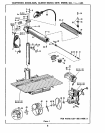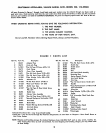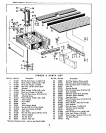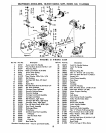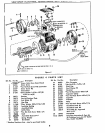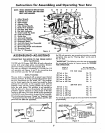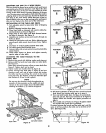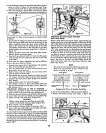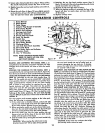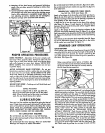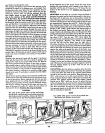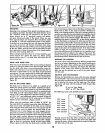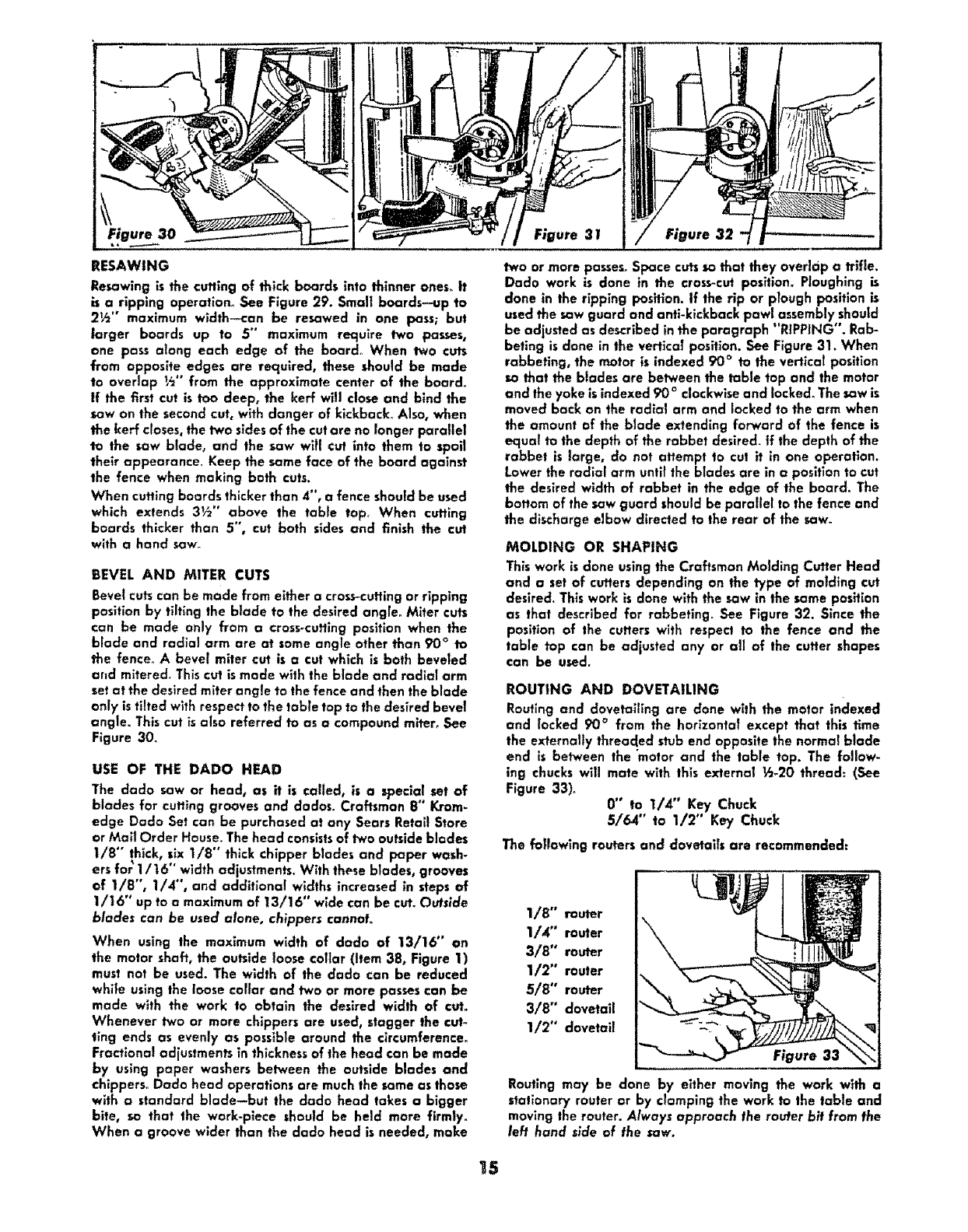
RESAWING
Resowing is the cutting of thick boards into thinner ones_It
is a ripping operatiano See Figure 29. Smalt boards-up to
2½" maximum wldth--can be resawed in one pass; but
larger boards up to S" maximum require two passes,
one pass along each edge of the board.r When two cuts
from opposite edges are required, these should be made
to overlap _,_"from the approximate center of the board_
If the first cut istoo deep, the kerf will close and bind the
saw an the second cut, with danger of kickback° Also, when
the kerf closes,the two sides of the cutare na longer parallel
to the saw blade, and the saw will cut into them to spoil
their appearance_ Keep the same face af the board against
the fence when making both cuts.
When cutting boards thicker than 4"° a fence should be used
which extends 3½" above the table topr When cutting
boards thicker than 5", cut both sides and finish the cut
wlth a hand saw_
BEVEL AND MITER CUTS
Bevel cutscan be made from either a crass-cuttingor ripping
position by tilting the blade to the desired angle. Miter cuts
can be made only from a cross-cutting position when the
blade and radial arm are at some angle other than 90 = to
the fence° A bevel miter cut is a cut which is both beveled
arid mitered. This cut is made with the blade and radial arm
set at the desired miter angle to the fence and then the blade
only istilted with respectta the table top to the desired beve!
angle. This cut isalso referred to as a compound miter, See
Figure 30_
USE OF THE DADO HEAD
The dado saw or head, as it is called, is a special set of
blades for cutting grooves and dados_ Craftsman 8" Krom.
edge Dada Set can be purchased at any Sears Retail Store
or Mall Order House. Thehead consistsof two autside blades
I/8" thick, six 1/8" thick chipper blades and Paper wash-
ers for' 1/t6" width adjustments. With these blades, grooves
of 1/8", 1/4", and additional widths increased in steps of
1/t6" up to a maximum of 13/16" wide can be cut. Outside
blades con be used alone, chippers cannot°
When using the moxlmum width of dado of 13/16" on
the motor shaft, the outside Ioo_e collar (Item 38, Figure 1)
must not be used. The width of the dado can be reduced
while usingthe loose collar and two or more passes can be
made with the work to obtain the desired width of cut°
Whenever two or more chippers are used, stagger the cut-
ting ends as evenly as possible around the clrcumference_
Fractlanat adjustments in thicknessof the head can be made
by using paper washers between the outside blades and
chippers° Dado head operations are much the same as those
with a standard blade-but the dado head takes a bigger
bite, so that the work-place should be held more firmly.
When a groove wider than the dado head is needed, make
Figure 31 Figure 32
two or mare passes_Space cutsso that they oveddp a trifle.
Dado work is done in the cross-cut position. Ploughing is
done in the ripping position. If the rip or plough position is
usedthe saw guard and anti-kickback pawl assembly should
be adjusted as described in the paragraph "RIPPING". Rab-
beting is done in the vertical position. See Figure 31. When
rabbeting, the motor is indexed 90 ° to the vertlcat position
so that the blades are between the table tap and the motor
and the yoke isindexed 90 oclockwiseand locked°Thesow is
moved back on the radio1 arm and locked to the arm when
the amount of the blade extending forward of the fence is
equal to the depth of the rabbet desired, tf the depth of the
rabbet is large, do not attempt to cut it in one operation.
Lower the radial arm until the blades are in a position to cut
the desired width of rabbet in the edge of the board, The
bottom of the saw guard should be parallel to the fence and
the discharge elbow directed to the rear of the sown
MOLDING OR SHAPING
Th_swork isdone using the Craftsman Molding Cutter Head
and a set of cutters depending on the type of molding cut
desired. This work isdone with the saw in the some position
as that described for rabbetlng_ See Figure 32. Since the
position of the cutters with respect to the fence and the
table top can be adjusted any or all of the cutter shapes
can be used.
ROUTING AND DOVETAILING
Routing and dovetailing are done with the motor indexed
and locked 90 ° from the horizanta! except that this time
the externally threaded stub end opposite the normal blade
end is between the "motorand the table top. The foffow-
ing chucks will mate with this external ½-20 thread: (See
Figure 33)°
0'° to 1/,_" Key Chuck
5/64" to I/2" Key Chuck
The followlng routers and dovetails are recommended:
1/8" muter
1/4'" router
3/8" router
1/2" router
5/8" router
3/8" dovetail
1/2 °° dovetoff
Figure 33
Routing may be done by either moving the work wffh a
stationary router or by clamping the work to the table and
moving the router. Always approach the router bit from the
left hand side af the saw.
15




